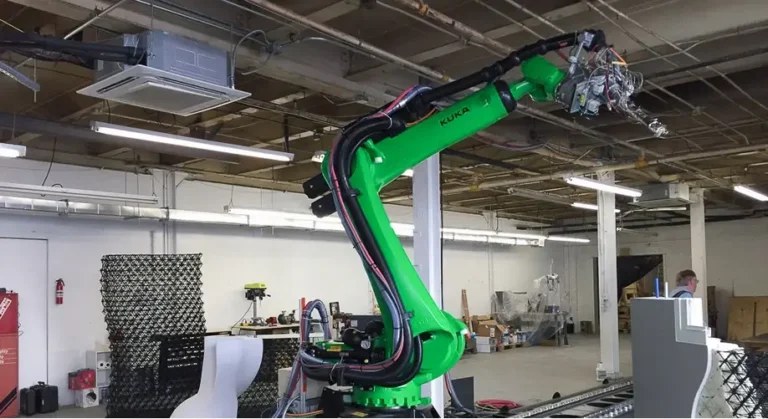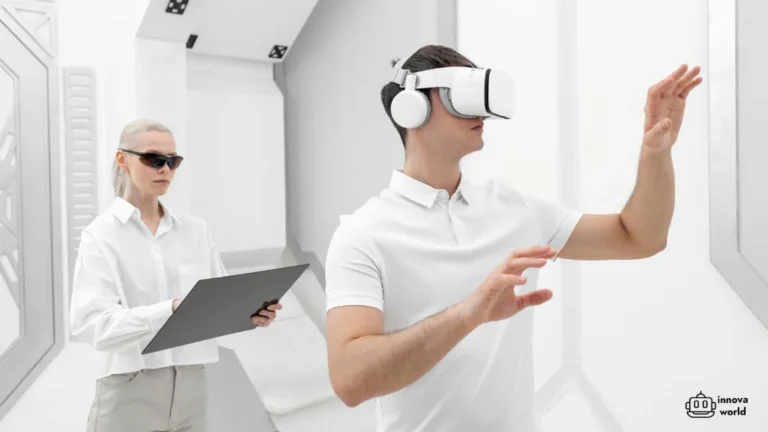The start of 3D printing has brought a wave of innovation to industries worldwide, and construction is no exception. This groundbreaking technology is redefining how we design and build structures, offering faster, cost-effective, and eco-friendly solutions. But how is 3D printing shaping the future of homes and architecture? Dive into the world of construction innovation to uncover the transformative potential of this technology.
Table of Contents
How 3D Printing is Transforming Construction

Robotic arm used to 3D print concrete structures (Image: Reproduction/Cornell University)
At its core, 3D printing in construction involves using advanced machines to layer materials like concrete into complex designs. This process creates structures directly from digital models, allowing for unprecedented customization. Unlike traditional building methods, this approach minimizes waste, reduces labor, and significantly speeds up project timelines.
By automating key aspects of the building process, 3D printing enables the rapid creation of homes, office spaces, and even entire neighborhoods. As the technology evolves, its applications continue to expand, pushing the boundaries of what is possible in construction.
Advantages of 3D printing Printed Homes

A completed 3D-printed house showcasing modern architectural design.
One of the most exciting applications of 3D printing in construction is the development of affordable and sustainable homes. These homes offer several advantages over traditional builds, including:
- Cost Efficiency: Automated processes reduce labor costs and waste.
- Sustainability: Materials like recycled concrete or biodegradable components are often used.
- Customization: Home designs can be tailored to meet specific needs, incorporating unique architectural features.
In areas facing housing shortages, 3D printed homes provide a viable solution by enabling faster, large-scale production.
Challenges Facing Additive manufacturing in Construction
Despite its many benefits, 3D printing in construction still faces challenges that must be addressed before it can become mainstream. These include:
- Material Limitations: While concrete is commonly used, other materials are still being developed for structural integrity and durability.
- Regulatory Barriers: Building codes and zoning laws are not yet adapted to account for 3D printed structures.
- Initial Costs: High setup costs for large-scale 3D printers can deter smaller companies.
These hurdles highlight the need for continued innovation and regulatory adaptation to fully integrate Additive manufacturing into the construction sector.
The Future of Architecture with 3D Printing
[Ideal para foto 4: Projeções futurísticas de cidades com edifícios impressos em 3D.]
Legenda: A futuristic cityscape featuring 3D-printed skyscrapers.
The future of Edification lies in the fusion of technology and sustainability. 3D printing enables architects to create complex, energy-efficient designs that were once impossible to achieve. From urban planning to disaster relief, this technology holds promise for addressing some of the world’s most pressing challenges.
Moreover, advancements in material science are paving the way for 3D printed buildings that are both eco-friendly and resilient. As these innovations continue, 3D printing will play an integral role in shaping cities of the future. learn more
Conclusion: A New Era in Construction
The integration of 3D printing into Edification marks a pivotal moment in architectural history. This technology offers immense potential to create affordable, sustainable, and customizable structures, paving the way for a more efficient and innovative industry.
However, the journey is just beginning. Overcoming technical and regulatory challenges will be key to unlocking the full potential of 3D printing. With ongoing advancements, this technology is poised to redefine how we think about homes, buildings, and the future of construction itself.








